M18 Recoilless Rifle dynamo-rocket anti-tank grenade launcher

M18 Recoilless Rifle
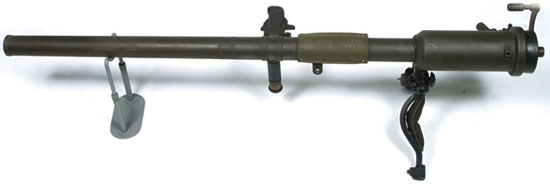
M18 Recoilless Rifle
In 1943, a dynamo-jet (recoilless) anti-tank grenade launcher was developed in the United States, designated M18 (in the American classification it was called “M18 Recoilless Rifle” - M18 recoilless rifle). The new grenade launcher was positioned as a longer-range and more accurate anti-tank infantry weapon, designed to complement the 60-mm M1 and M9 “Bazooka” rocket grenade launchers.
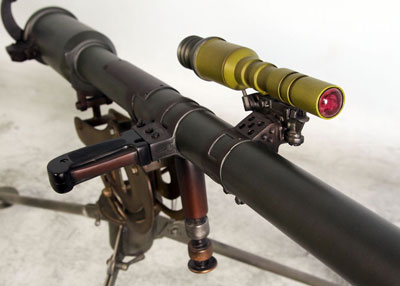
M18 Recoilless Rifle (View of Controls)
The 57-mm dynamo-rocket (recoilless) anti-tank grenade launcher M18 is a steel rifled barrel open at both ends, in the rear of which a folding bolt with a nozzle is installed to eject powder gases that compensate for recoil when fired.
A pistol grip with a mechanical trigger mechanism, a folding bipod (serving as a shoulder rest when folded), as well as a bracket of the standard optical sight are fixed on the barrel.
The grenade launcher was loaded from the breech, after the bolt with the nozzle was tilted. After the shot, it was necessary to remove the spent cartridge case from the barrel.
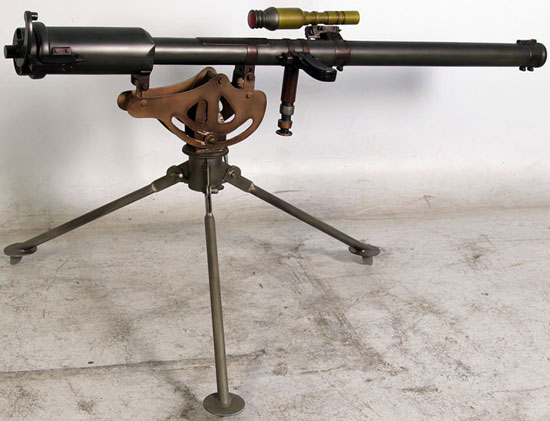
M18 Recoilless Rifle
on the Machine
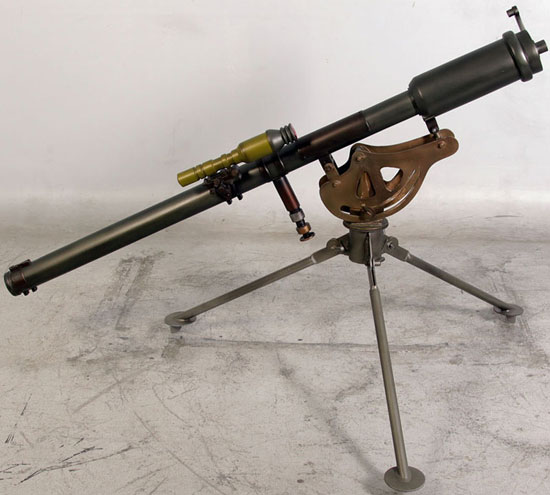
M18 Recoilless Rifle
on the Machine
Ammunition for the M18 grenade launcher was in the form of a unitary round with a steel case. The mass of the shot was about 2.5 kg, of which about 450 grams accounted for the propellant charge (smokeless powder) and 1.2 kg for the grenade being fired. The steel case had 400 round holes in its side walls, through which most of the powder gases burst into the barrel chamber and out of it back into the nozzle when fired, thereby compensating for the recoil of the weapon and creating a significant danger zone behind the grenade launcher. The powder propellant charge inside the case was in a combustible bag made of waterproof material. Ignition of the propellant charge is mechanical shock, using a standard primer-igniter located in the bottom of the case.

M306 high-explosive fragmentation round
The main types of rounds for the M18 grenade launcher were M306 / M306A1 HE (high-explosive fragmentation), M307 / M307A1 HEAT (armor-piercing cumulative), M308 / M308A1 WP (smoke / incendiary), T25E4 (anti-personnel canister, close combat) and training with an inert grenade. The muzzle velocity of the grenade reached 366 m/s, the maximum firing range was about 4400 meters, the effective firing range, depending on the type and size of the target, ranged from 300-400 to 1600 meters, thanks to the presence of a standard optical sight with range markings from 200 to 1800 yards.
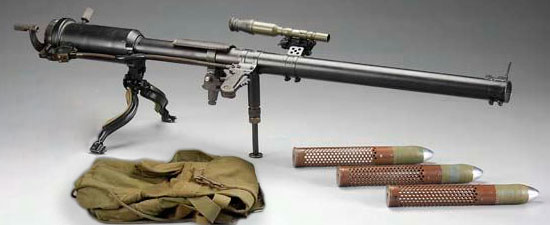
M18 Recoilless Rifle
with used ammunition
The M18 grenade launcher could be fired from the shoulder, from the ground (with an emphasis on the unfolded bipod), as well as from the M1917A1 or M74 machine gun tripod. Firing from the mount provided the greatest practical accuracy.
| Caliber, mm | 57x303 |
|---|---|
| Length, mm | 1560 |
| Weight, kg | 20.1 |
| Projectile weight, kg | 2.46 |
| Armor penetration, mm | 76 |
| Maximum range, firing, m | 4400 |
The first use of the M18 dynamo-rocket anti-tank grenade launchers dates back to the first half of 1945 (at the end of World War II), after which they were massively used by the US armed forces during the Korean War.
The 57-mm M18 Recoilless Rifle dynamo-rocket anti-tank grenade launchers showed insufficient effectiveness against tanks, but they were successfully used by American infantry against light fortifications, machine gun points and other similar targets, due to the presence of high-explosive fragmentation and incendiary-smoke rounds in the ammunition load.
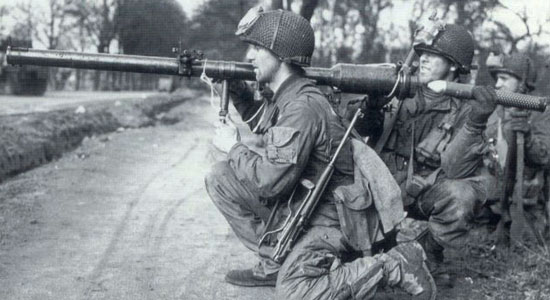
M18 Recoilless Rifle
when loading
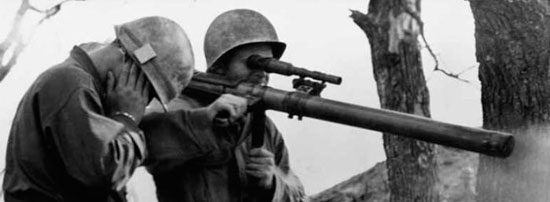
M18 Recoilless Rifle